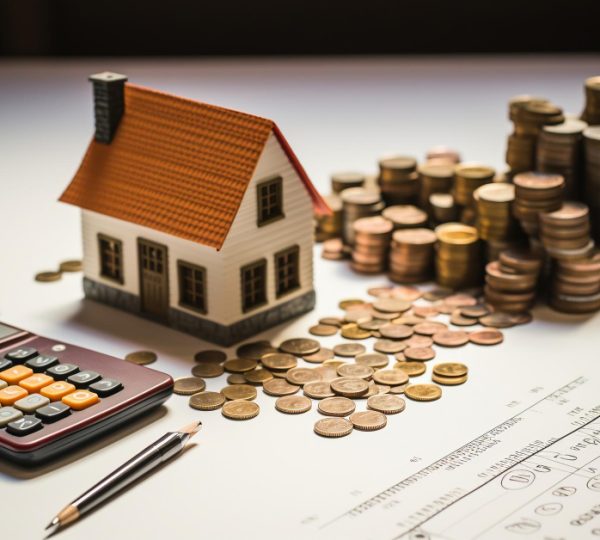Choosing Sustainable Construction Materials for Your Home
Many customers are attempting to lessen their carbon emissions and make more thoughtful purchasing selections in response to climate change’s obvious and catastrophic repercussions. Sometimes customers make tiny adjustments, such as switching to metal straws from plastic ones, while others cause significant decisions, such as choosing an electric automobile or forgoing a car. Homeowners may select more environmentally friendly alternatives for building materials while building or remodeling. When creating, enhancing, and residing in your house, you may use less energy and produce less trash using organic goods, reused materials, and local resources.

The following sustainable building materials are available for your home:
A hill that already existed or was created from flat terrain to cover an earth shelter dwelling serves as its primary covering. To prevent problems with water leaks or structural instability, you should use a home builder competent with earth shelters. The purported advantages of these constructions include increased protection from the weather and lower utility expenditures because indoor temperatures remain reasonably moderate.
Give discarded wood a new lease on life rather than purchasing freshly cut wood from a lumberyard or home improvement retailer. Reclaimed wood may be used for furniture such as tables and chairs and flooring, fences, doors, and window frames. Because the organization disassembles houses rather than wrecking them with a wrecking ball, it is feasible to locate recycled housing components on a big scale, thanks to The Architectural Salvage Warehouse of Detroit. This allows for acquiring and reusing materials such as flooring, doors, cabinets, and other items for brand-new construction projects.
Metal components from a building about to be demolished can also be salvaged, much like wood. If the plumbing or electrical connections haven’t been harmed or haven’t had too much wear and tear, they can be returned to use.
Concrete frequently remains the material for constructing a building’s outside walls since it is more durable. But prefabrication is becoming increasingly widespread to lower the amount of energy needed to make it. This indicates that the slab is made at a factory rather than being poured on-site and transported to the building site. This kind of prefabrication is more frequently used in the construction of large-scale public infrastructure, such as sewers, highways, or bridges, as well as in the construction of commercial buildings, hotels, and maybe large-scale apartment buildings.
It might take years or even decades for trees like pine, oak, and maple to recover to the degree that they can once again be harvested for their wood. The Guinness Book of Records lists bamboo as the fastest-growing plant anywhere in the world, despite bamboo’s superior strength and flexibility. The bamboo material is now unavailable domestically, which is a constraint. According to Gilbert Galindo, the author of Bamboo Grove, a site dedicated to educating the public about the advantages of bamboo, the majority of it is in China, Malaysia, and similar locations. Galindo continues to observe rising interest in bamboo production and use in the United States and anticipates that it will eventually play a significant role in sustainable building. Today, it’s most frequently used as a flooring alternative.
Another durable, sturdy, and physically flexible tree product is cork. Cork is a reliable alternative for floors or even as flooring in place of plywood since it is immune to moisture and is recognized for effectively absorbing noise. Like bamboo, cork is grown abroad, notably near the Mediterranean Sea. Compared to more popular materials in the U.S., this renders the material primarily cost-prohibitive and increases shipping energy costs. However, cork oak farming may rise as homeowners and contractors look for other materials.
Mycelium, the vegetative portion of a fungus, is one of the most organic construction material possibilities available. The fungus is combined with organic waste to create mycelium bricks, which are perfect for construction since they are immune to water, mold, and fire. However, mycelium has possibilities outside of the building sector as well. In 2019, Scientific American published an article on the possible applications of mycelium in the food business and the development of medical technology.
A shipping container house could be right for you if you’re interested in using recycled materials and want a more contemporary design style. A 40-by-8-foot container could make the ideal exoskeleton for the new tiny home, but make sure you do a cost analysis first. Due to the lack of natural insulation, a shipping container can get very hot or cold, depending on the outside temperature. You’ll need to make window and door openings in the exterior construction in addition to installing insulation.
Europe has been using cob, clay soil containing sand, and straw as construction material for millennia. The mixture may be put together and formed, where it will dry from the sun’s heat without needing to be framed. Cob cottages are typically tiny and built by the owner because they are manufactured by hand; however, two-story buildings with functional windows are also possible.
Cob-like in composition but with a more organized, brick-like form, it is adobe. Adobe and cob have some heating properties, yet they may need extra insulation in colder areas. Adobe walls in a desert environment will take in heat throughout the day and release it at night when the temperature outside has dropped. Adobe, a historically prominent construction material in the arid Southwest of the United States, is being employed by master artisans there today.
Rammed earth tires suit the bill for that site-specific blend of reused and natural materials. However, it takes a lot of energy and physical effort to pack soil into individual tires to construct a whole home’s outside walls. It is cheap to create for someone who is determined about the look. Frequently, mud from the neighborhood is used to pack the old tires, which can be bought secondhand from a tire shop or recycling plant or even discovered dumped on the side of the road.
Like rammed earth tires, earthbag construction employs a similar earth mixture, but the end product resembles bricks more. The earth mixture is put into bags frequently constructed of a plastic material that can handle weight and contact with the weather. Incorporating insulation of any kind will help to give better protection from the cold or the heat in the summer.
An essential component of American steel production is melting scrap steel to produce new goods. It enables the reuse of steel items, such as obsolete automobiles or structural beams, from demolished structures. American Iron and Steel Experts estimate that every year in North America, 60 to 80 million tons of steel waste are recycled into new steel products.
Ferrock uses recycled resources, including steel dust, to make a construction material resembling concrete to use the byproducts from the steelmaking process better. But Ferrock seems much more robust than concrete when steel is the main component. Additionally, the substance collects more carbon dioxide than it emits. IronKast, the business that owns the patent on the importance, is still in the early phases of development.
Wood is included in the expanding list of concrete substitutes by adding sawdust or wood chips to a concrete or cement mixture, resulting in a lighter finished product than conventional cement walls or slabs. The substance utilizes wood scraps that would otherwise go to waste, and the decreased weight lowers shipping expenses. Australian-based Timbercrete is a trademarked name, whereas Faswall is located in the United States. The two businesses use several production methods to create their wood-and-cement construction materials, each of which is said to have various environmental advantages.
In contrast to many sustainable construction materials mentioned above, grasscrete is used to lessen the quantity of concrete needed in a sidewalk or driveway rather than forming building blocks or panels. A cutaway design keeps a firm surface where pavement would generally be while allowing grass to grow uniformly. Compared to a paved area, grasscrete improves the area’s capacity to absorb water and provides more room for plant growth.
Papercrete enables builders to create something new from recycled resources by combining paper with other components to form a concrete-like substance. A straightforward Google search can bring up DIY instructions for making papercrete, which is more specific to create because of the readily available components. It may be made into bricks or used as a plaster. It isn’t the most resilient material, though; it will more likely deteriorate if exposed to moisture or outdoors.
Like timber creates, hempcrete is less expensive to carry since it is lighter than conventional concrete. Due to marijuana regulations that prevent the cultivation of hemp, a strain of the cannabis plant, hemp farming has historically been confined to a minimum. However, towards the end of 2018, the American legislature declared hemp a regular agricultural crop, making its cultivation acceptable. Legalizing hemp production in several areas has also been overturned; thus, hempcrete may become a more popular building material.
Wool may be utilized as insulation for your home, much way a wool sweater keeps you warm in the winter. Wool production requires relatively little energy since it develops spontaneously in sheep. However, a large home would need a lot of wool to insulate the entire thing, so you may need to purchase it from several flocks or throughout several seasons.
Another insulating option is searching for plant-based polyurethane foam as an alternative to the standard plastic rigid foam. The kelp, hemp, and bamboo insulation efficiently block out moisture and heat or cold. When San Diego-based Malama Composites Inc. looked for a safer substitute for surfboard’s hazardous ingredients, they discovered this plant-based rigid foam. Since then, it has been utilized for insulation, packaging, and other purposes.
As a natural construction material and superb insulator, straw bale is gaining favor. Building a bale home is inexpensive because plaster or a comparable substance is required to shelter the pellets from the weather. For the outside or interior construction of the house, straw bales can be utilized as an efficient insulator alone or in combination with other building materials.
To reduce the quantity of plastic garbage produced worldwide, research is still being done on reusing plastic into a valuable building material. Recycled plastic lumber, a fully recyclable product with properties similar to wood, is emerging as a functional building material. The American Society for Testing Materials has set criteria for the production and use of recycled plastic lumber to guarantee that the plastic recycling process and its usage as lumber are advantageous to both the environment and the general population.



